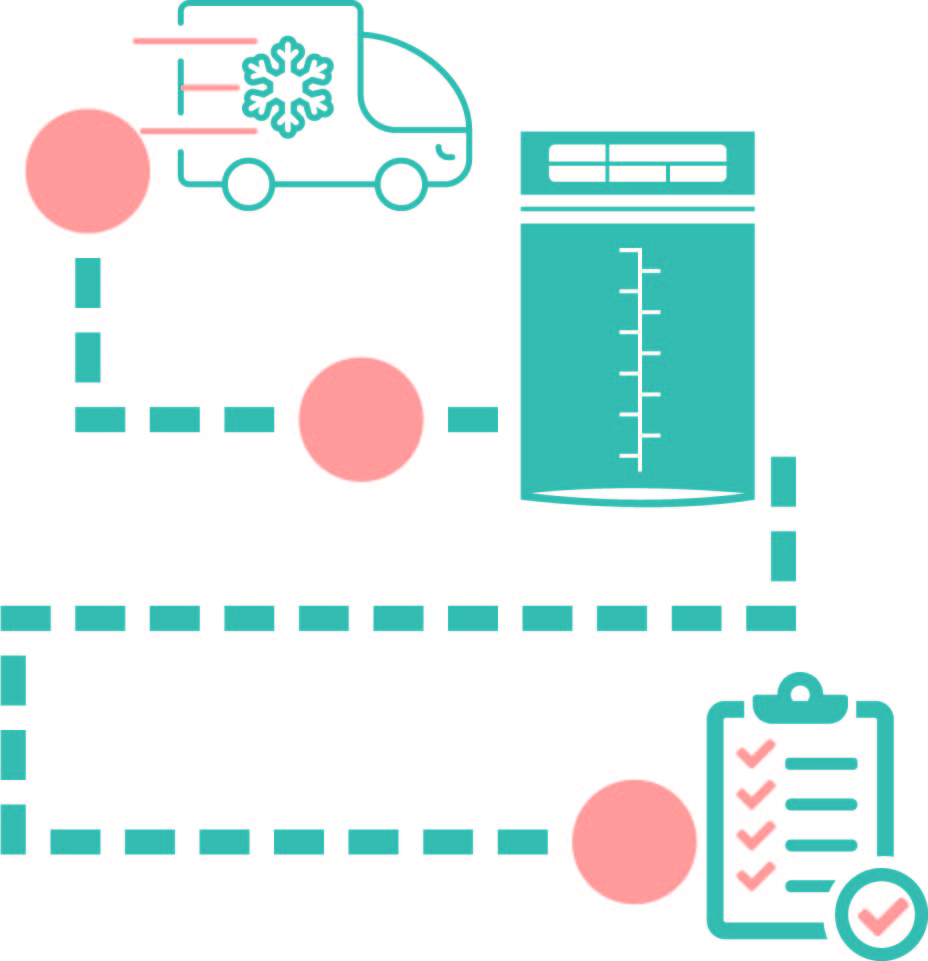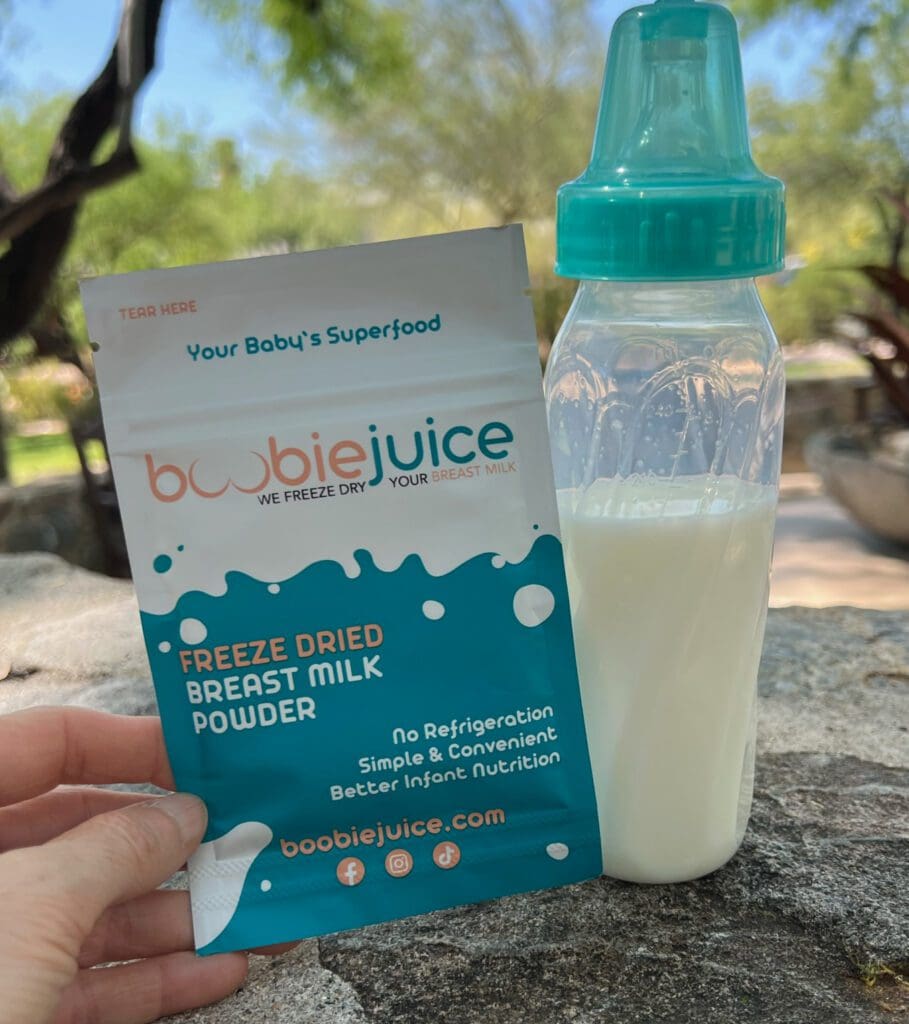
Freeze dried breast milk utilizes sublimation, a well-established food preservation method that involves removing the water content from breast milk and turning it into a powdered form. This process, known as lyophilization, requires the milk to be frozen and then placed under a vacuum, where the water content is removed through sublimation.
The powdered breast milk can then be reconstituted with water before feeding it to infants. Freeze dried breast milk offers convenience, portability, and extended shelf life, but it is important to consider factors. These include nutritional content, bacterial contamination concerns, and shelf life when evaluating the safety of freeze-dried breast milk.
Key Takeaways
- Freeze-dried breast milk is a powdered form of breast milk produced through the lyophilization process.
- Proper breast milk collection, freezing handling, and storage can help minimize potential risks.
- Proper transport and track and trace processing through a reputable cGMP processing company like BoobieJuice helps to ensure safe, shelf–stable breast milk powder.
Freeze-Dried Breast Milk Explained
For many breastfeeding parents, preserving breast milk is essential, but traditional freezing can be bulky, inconvenient, and prone to waste. Freeze-drying offers a modern, efficient solution that’s gaining traction for good reason. The freeze dried breast milk risks are small and this fine breast milk powder has plenty of advantages.
Early research shows promising safety, nutrient retention, and convenience benefits that make freeze drying human breast milk a compelling option for long-term storage.
Preserves Nutritional Integrity
One of the greatest dried breast milk benefits is its ability to preserve the macronutrients and the bioactive compounds in breast milk. Unlike standard freezing methods that can degrade nutrients over time, freeze-drying removes moisture in a controlled, low-temperature environment. This protects proteins, fats, and carbohydrates that are essential for infant development.
Research has confirmed that freeze-dried breast milk retains its nutritional quality and is stable for longer storage, particularly when kept in sealed, cool conditions. Though some antioxidants may decline slightly, the overall balance of nutrients remains intact, especially compared to reheated frozen milk.
Safe When Handled Properly
Freeze-dried breast milk is microbiologically stable. Because bacteria need moisture to grow, the freeze drying process dramatically reduces spoilage risk and bacterial growth. While freeze-drying alone doesn’t sterilize milk components, emerging studies show that combining it with methods like High-Pressure Processing (HPP) can eliminate common pathogens—offering enhanced safety for immunocompromised infants.
A study found that breast milk treated with HPP before freeze-drying retained safety while preserving immune-boosting proteins. This means that, in the right conditions, freeze-drying can offer both convenience and peace of mind.
Convenient for Travel and Long-Term Storage
Parents using freeze-drying services often cite convenience as a top benefit. Instead of managing bulky frozen bags that require constant refrigeration, their own freeze dried human milk is shelf-stable, lightweight, and travel-friendly. Just rehydrate with warm water, and it’s ready for feeding, ideal for travel, childcare transitions, or emergency preparedness.
Freeze-dried milk can last up to three years when stored in vacuum-sealed, low-moisture packaging. No freezer? No problem. This solution is perfect for parents on the go or with limited storage space.
While more clinical studies are ongoing, the early data is encouraging and many reputable companies have begun offering cGMP-compliant processes to ensure quality and safety. For many families, freeze-drying offers the freedom to pump on their own terms, without worrying about expiration dates or freezer burn.
Freeze drying breast milk is also an option for human milk banks and for those with high lipase milk who would like to mitigate the taste issues of their refrigerated milk.
Addressing Bacterial Contamination Concerns
Unlike pasteurization, freeze-drying does not eliminate bacterial pathogens and milk retains its original raw state retaining its unique microbiome and immunoglobulins. Sterile breast milk pouches must be used in conjunction with following the bag manufacturers and FDA handling recommendations to collect, freeze, and store breast milk prior to processing.
Next, you must choose a company like BoobieJuice, which provides step by step guides and responsive customer support on how safely ship and transport your frozen breast milk for processing. Companies like BoobieJuice implement a cGMP track and trace protocol along with a contactless processing method, drastically reducing any potential for cross-contact exposure by limiting contact exposure. These recommended methods of collection, storage, and shipping greatly reduce initial breast milk bacteria payloads prior to arriving.
BoobieJuice utilizes a contactless processing method that virtually eliminates cross contact exposure risk, while the natural freeze drying process halts further bacteria and enzyme function putting key components like pre and probiotics into freeze dried stasis.
The items above showcase the importance of choosing a freeze dried breast milk company like BoobieJuice that focuses on GMP manufacturing procedures to safeguard your stash.
FDA and cGMP Guidelines for Breast Milk Handling
The FDA recommends proper collection, storage temperature, and sanitation practices for breast milk. While freeze-dried breast milk may not have specific guidelines, it is advisable to adhere to these guidelines to minimize potential risks. Additionally, some companies, such as Freeze Dried Breast Milk Service Company BoobieJuice (current Good Manufacturing Practice) have guidelines to ensure the quality and safety of their freeze-dried breast milk.
Frequently Asked Questions
Can freeze-dried breast milk be used in NICUs or for premature babies?
While freeze-dried breast milk shows strong potential, most NICUs currently use donor milk that’s been pasteurized and tested per hospital protocols. Research into the suitability of freeze-dried breast milk for medically fragile infants is ongoing, and use in clinical settings should always be guided by a physician. It is recommended when rehydrating freeze dried breast milk and giving to immune compromised baby’s or new born infants to rehydrate with 158F vapor distilled water.
How do I know if my baby will drink freeze-dried breast milk?
If your baby already drinks your fresh or frozen milk, they will likely drink reconstituted freeze-dried milk as well. Taste and smell may be slightly milder due to reduced enzyme activity, which some babies actually prefer it.
Can I mix freeze-dried breast milk powder with formula?
Yes, it is possible to fortify formula with your own freeze dried powder. Keep in mind mixing the two can alter nutritional balance and potentially upset your baby’s nutritional kcal consumption. We recommend consulting with your provider or nutritionist to find what is most suitable for your baby..
Is it possible to freeze-dry breast milk at home?
Not safely. Home freeze-drying machines are not designed specifically for human milk, are difficult to clean and sterilize and most homes lack the required testing equipment to ensure the milk is properly dry. Only commercial-grade, cGMP-compliant facilities like BoobieJuice are equipped for this delicate process.
Can I travel with freeze-dried breast milk on a plane?
Yes you may. Freeze dried breast milk is compact and travels well. BoobieJuice Freeze dried pouches are properly identifiable for TSA agents Since it’s shelf-stable and powder-based, freeze-dried breast milk is TSA-compliant and easy to pack in your carry-on. Check the TSA requirements for breast milk and baby food for carry on or checked bags for up to date current travel requirements
Is freeze-dried breast milk environmentally friendly?
Generally, a mother’s milk is incredibly eco-friendly. Freeze-drying reduces the need for long term refrigeration.
Can I use freeze-dried milk if my baby has a dairy sensitivity?
If your baby reacts to the proteins in your breast milk due to your diet, the same allergens will likely be present in the freeze-dried version. Speak with a pediatrician about elimination diets or allergy testing before continuing with freeze-dried milk.
Keep Freeze Dried Milk Handy

It is essential to follow proper handling, storage, and reconstitution practices. This includes ensuring proper hygiene, using reputable freeze-drying services, and adhering to recommended storage guidelines. By taking these precautions, potential bacterial contamination and changes in nutritional content can be mitigated.
Rest assured, companies like BoobieJuice are here to help!
